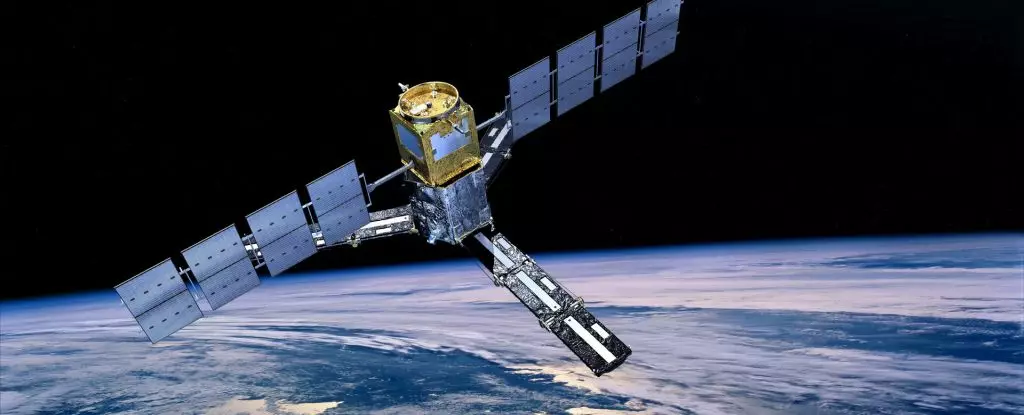As humanity stands on the brink of a new era in space exploration, the potential ramifications of climate change on our ability to utilize low Earth orbit (LEO) come into sharp focus. A recent study, led by aeronautical engineer William Parker from the Massachusetts Institute of Technology (MIT), highlights the alarming interplay between anthropogenic greenhouse gas emissions and the stability of space infrastructure. Exploring the intricacies of this relationship not only illuminates the challenges at hand but also underscores the urgent need for cohesive global action.
The Delicate Balance of Orbital Operations
Low Earth orbit is a finite resource. The vastness of space may be intimidating in its expansiveness, yet the zone within approximately 200 to 1,000 kilometers (125 to 620 miles) of Earth is becoming increasingly crowded. As satellites and space junk continue to accumulate, we edge closer to an inevitable tipping point known as the Kessler Syndrome, where collisions become a grim reality. The notion that space can serve as an infinite dumping ground for technological waste is fundamentally flawed. In fact, understanding how atmospheric dynamics can regulate this capacity is essential to ensuring sustainable orbital operations.
The research indicates that conditions in low Earth space will deteriorate as greenhouse emissions cause the thermosphere to shrink. This atmospheric layer, which extends from altitudes of around 85 to 600 kilometers, plays a crucial role in controlling the drag experienced by satellites. Increased drag can cause satellites to lose altitude, making their operational lifespan shorter unless active measures for altitude correction are taken. Conversely, if drag is reduced due to changes in atmospheric density from climate effects, defunct satellites would linger longer in orbit, exacerbating the space debris problem.
A Chain Reaction of Collisions
In understanding the Kessler Syndrome, we can visualize a domino effect; each time two satellites collide, the debris generated augments the risk to other satellites. This self-propagating cascade threatens to render low Earth orbit utterly unusable. Parker’s findings indicate a dramatic reduction in operational capacity in the coming decades. Under a high-emission scenario, projections show a staggering 82% capacity reduction during periods of low solar activity by 2100. This paints a grim picture of a future where space traffic is not only migraines for engineers and operators but also a pressing concern for global communication, weather monitoring, and scientific discovery.
Humanity has barely begun to grapple with the scale of this challenge. Current operational parameters aren’t even close to triggering catastrophic collisions—yet. The time to address this burgeoning problem is now. Moreover, the study emphasizes that while there are currently around 11,901 operational satellites, an estimated 20,000 pieces of space debris are cluttering our orbital pathways. If we do not implement innovative solutions, we stand to squander our access to the very environment that allows us to navigate, communicate, and explore the cosmos.
The Case for Unified Global Action
Parker and his colleagues assert that addressing both climate change and orbital debris should not be relegated to separate agendas; they are interlinked crises that demand unified global actions. Future satellite deployment and space exploration must be approached with a keen awareness of their environmental impact. Satellite constellations—the massive groups of satellites working in concert—pose an even greater risk if exacerbated by deteriorating orbital conditions due to climate change.
Innovative solutions may lie in advanced space traffic management systems, or even in developing technologies that could actively remove debris or enhance the deorbiting processes of abandoned satellites. Policymakers must recognize the urgent need for regulatory frameworks that prioritize reducing greenhouse emissions and managing space sustainably. It is imperative that the global community collaborates to create guidelines that can be adhered to by all nations engaged in aerial exploration.
Exploring Solutions Beyond Earth
While the threats of climate change and orbital debris can appear daunting, innovation in space technology can pave the way for mitigating these risks. The advancement of autonomous systems for active debris removal or the use of propulsion methods that minimize emissions could reshape how we engage with low Earth orbit. Moreover, families of new materials for satellites could be developed to lower their impact on the space environment.
As we look into the future, humanity must shift its perspective from viewing space as an endless expanse to respecting it as a delicate ecosystem that needs protection. Each launch into orbit should be assessed not just for its technological merit but also for its potential repercussions. In doing so, we may safeguard not only our current capabilities but also the vast possibilities that lie ahead in space exploration and utilization.

